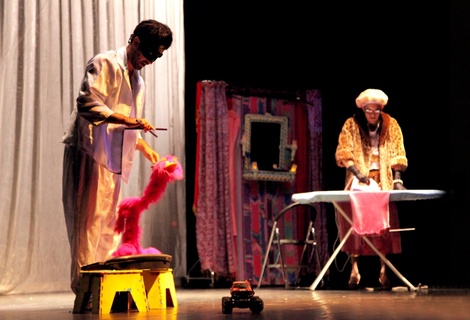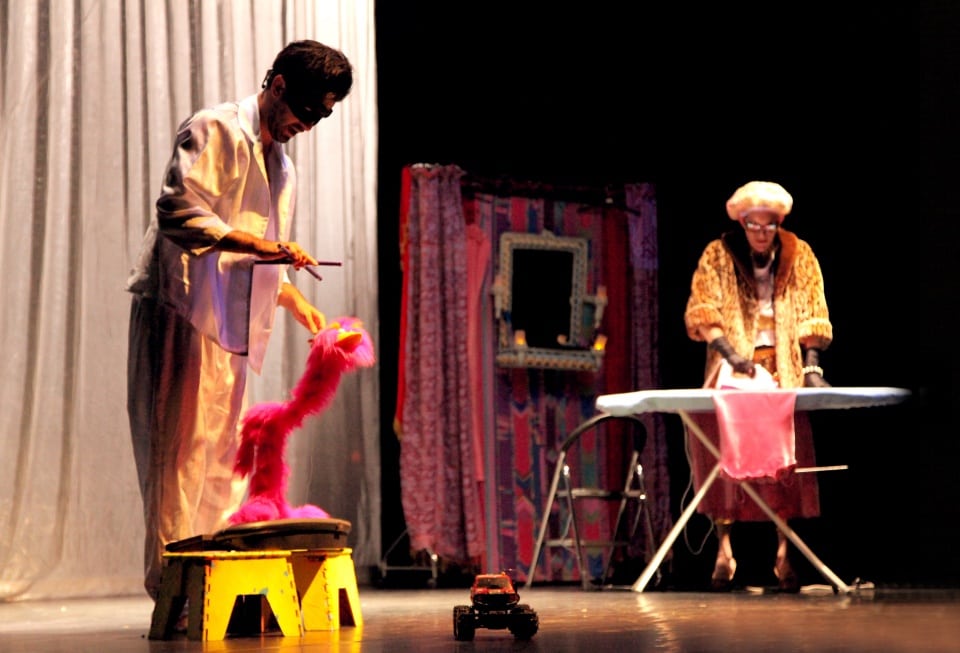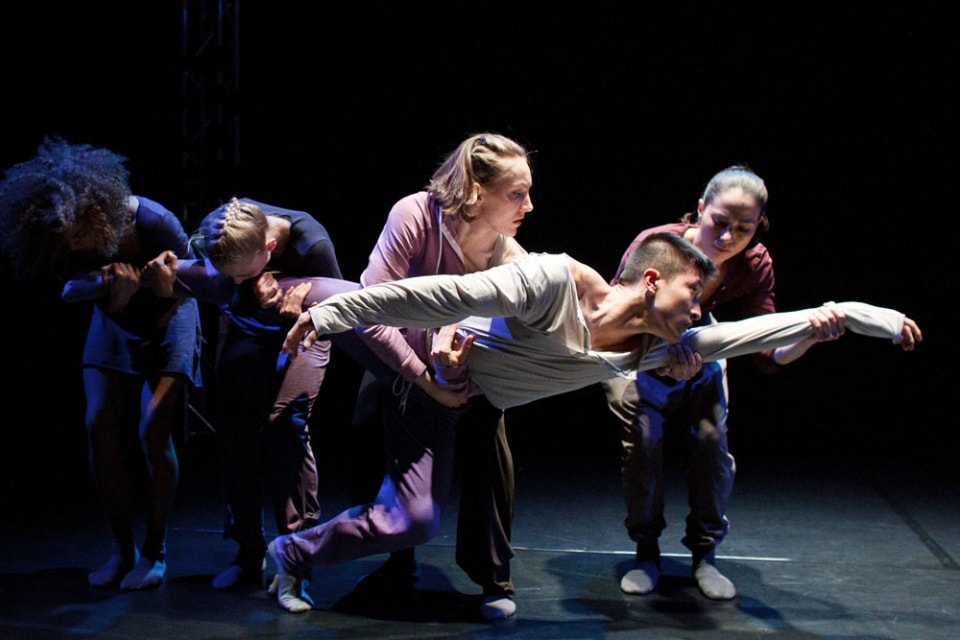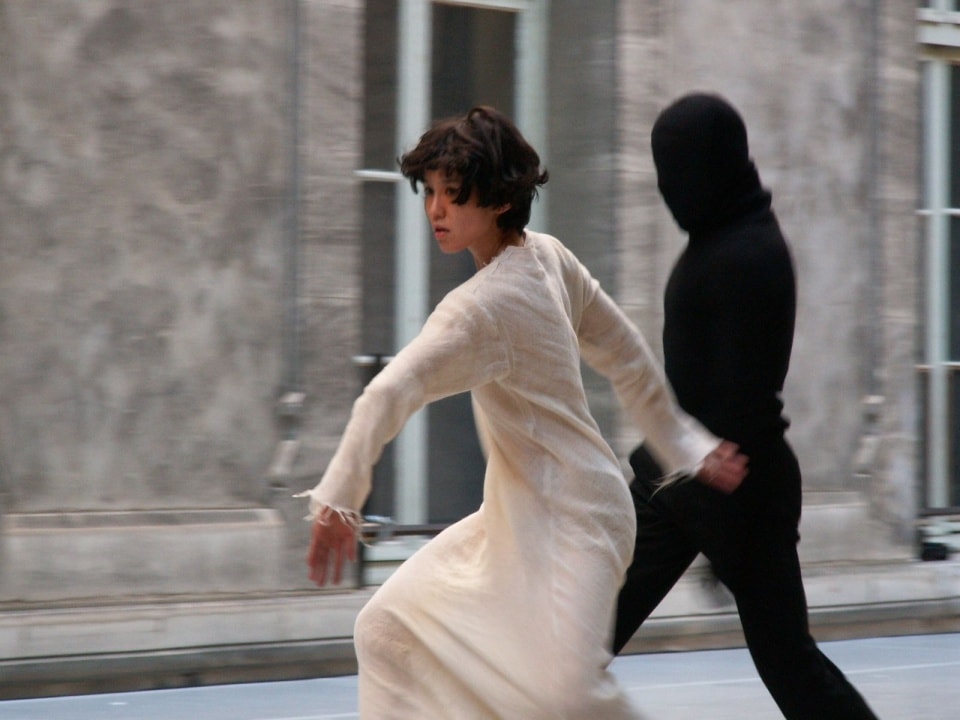Sometimes one is just blown away by a theatre piece. This happened to me last night with CIE I.D.A. and Mark Tompkins last night. Their piece has a rather silly title “Opening Night – A Vaudeville”. Theortically it’s billed as light entertainment and performance art, two of my least favorite genres. Normally performance art is under rehearsed claptrap by imperfect and sloppy technicians of modest charisma who are convinced the world rotates around their navels.
In other words performance art is an unadulterated fiasco which has poisoned the dance world and taken it over, as the less capable outnumber and outvote the properly trained as conteporary dance slips down a long greasy rail into ramp amateurism.
At least that’s what I thought until I saw Tompkins and his French partner Mathieu Grenier perform last night.

Mathieu Grenier Mark Tompkins as mother in Opening Night
Both gentleman are gifted singers and very capable actors. For much of “Opening Night” they sing a cappella together. In the Broadway or musical genre which provided the basic for their performance piece, both would likely be able to find and hold serious roles. These men take their craft seriously. Both are very funny but they do not camp it up with sniggers to the audience as so many of our new “funny” performers do. No Tompkins and Grenier pack their material thick with meaning and absurdity and power through it relentlessy, leaving audiences a bridge deck of questions to solve.
One of their songs includes throwaway lines which are not so throw away – “how life ebbs and flows”. A Vaudeville turned out to be a matter of life and death, the fragility of life.
Leave a Comment







